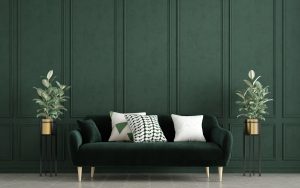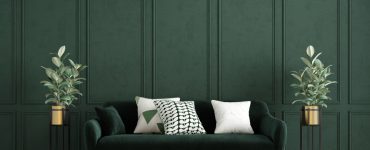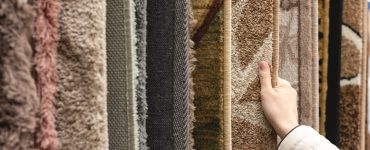When it comes to interior design, texture is a powerful tool that can elevate your living space from ordinary to extraordinary. Whether you’re looking to create a cozy and inviting atmosphere or aiming for a modern and sophisticated vibe, incorporating various textures can make a significant impact.
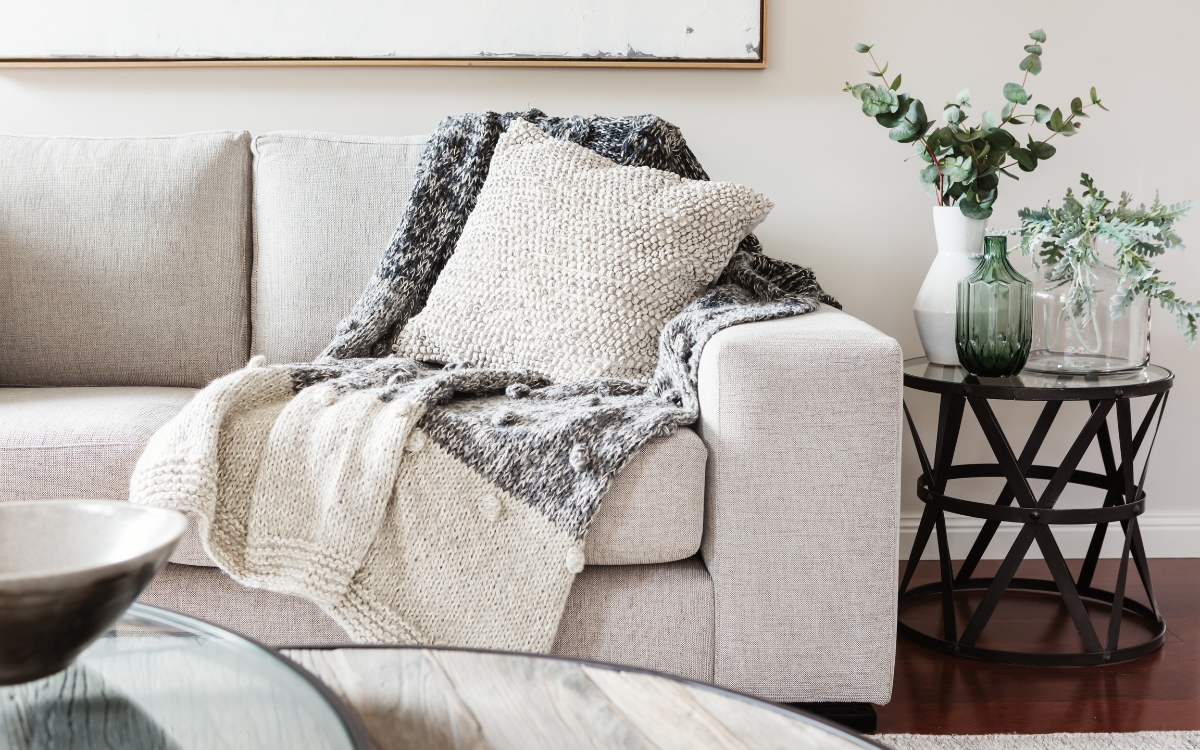
In this informative guide, we’ll explore the art of utilizing textures in interior design to transform your home into a place that not only looks visually stunning but also feels comfortable and inviting. We’ll delve into the different types of textures, from soft fabrics to hard elements like wood and stone, as well as natural and visual textures that bring the outdoors inside.
Understanding Texture in Interior Design
Texture is a crucial element in interior design that plays a significant role in shaping the overall look and feel of a living space. It refers to the tactile quality of surfaces and materials used in a room, as well as the visual perception of those surfaces. When properly incorporated, texture has the power to create depth, add interest, and evoke emotions, making a space visually appealing and inviting to both the eye and the touch.
What is Texture in Interior Design?
Texture in interior design refers to the surface characteristics of materials and elements within a space. These characteristics can be perceived through sight and touch, giving each surface a unique feel and appearance. Textures can be smooth, rough, soft, hard, bumpy, or even sleek, and they add a multidimensional quality to the design.
When considering texture in interior design, it’s essential to think beyond just materials used for furniture and decor. Texture can also be present in architectural elements, such as exposed brick walls, wooden ceiling beams, or intricately tiled floors. Understanding the various types of textures and how they interact with each other is essential to creating a cohesive and visually pleasing design.

The Role of Texture in Creating Visual Interest
Texture plays a fundamental role in adding visual interest and complexity to an interior space. A room with uniform, flat surfaces can appear dull and monotonous, lacking character and depth. By introducing different textures, you can create contrast and variety, making the space more captivating and dynamic.
One effective way to achieve visual interest through texture is by combining different materials with varying tactile qualities. For instance, pairing a sleek, glossy surface with a rough, textured wall can create a striking juxtaposition that draws attention and creates a focal point in the room.
The Psychological Impact of Textures on Home Atmosphere
Beyond aesthetics, textures also have a profound psychological impact on the atmosphere of a home. The way a surface feels can evoke specific emotions and influence how people perceive and interact with a space.
Soft and plush textures, such as cozy rugs and comfortable cushions, can create a sense of comfort and relaxation, perfect for a living room or bedroom. On the other hand, hard and rugged textures, like exposed brick or raw concrete, can imbue a space with a rustic, industrial charm, creating a more adventurous and bold ambiance.
Moreover, natural textures, like wood and stone, have the power to connect occupants with the outdoors, promoting a sense of harmony and tranquility. Understanding the emotional responses that different textures evoke can help you curate the atmosphere you desire in each room.
Exploring Different Types of Textures
Texture is a versatile tool in interior design, offering a wide range of possibilities to enhance the aesthetics and ambiance of a living space. By incorporating various types of textures, you can create a harmonious and engaging environment that truly reflects your style and personality. Let’s delve into some of the different types of textures and how they can be integrated into your home design.
Soft Textures: Incorporating Fabrics and Upholstery
Soft textures are all about comfort and coziness. These textures are commonly found in fabrics and upholstery used in furniture, cushions, and curtains. Incorporating soft textures into your home can create a warm and inviting ambiance, perfect for relaxation and unwinding.
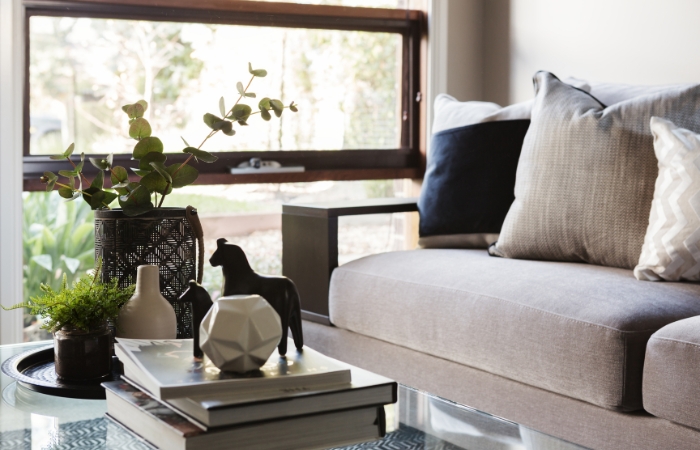
When selecting fabrics, consider materials like plush velvet, soft chenille, or luxurious silk to add a touch of luxury to your living space. Mixing and matching patterns and textures can also be a fun way to add visual interest. Consider layering different fabrics through throw pillows and blankets to create depth and dimension.
Hard Textures: Introducing Wood, Stone, and Metal
Hard textures add a sense of solidity and rawness to a room, making it feel grounded and sturdy. Wood, stone, and metal are common materials used to introduce hard textures into interior design.
Wooden elements, such as exposed beams, hardwood floors, or rustic furniture, bring a sense of warmth and natural beauty to any space. Stone features, like a brick accent wall or a stone fireplace, can add a touch of timeless elegance and earthiness. Metal accents, such as iron light fixtures or brass decor, offer a modern and industrial vibe.
Natural Textures: Embracing the Outdoors Indoors
Bringing natural textures indoors can create a harmonious connection with the outdoors, fostering a sense of serenity and tranquility. This category includes incorporating greenery and houseplants, as well as using materials like cork and bamboo.
Houseplants not only add a refreshing touch of green but also introduce textures through their leaves and stems. Consider using woven baskets made of natural materials like bamboo or rattan for storage and decoration. Cork can be used as a unique wall covering, while bamboo can be integrated into furniture or flooring for an eco-friendly and visually appealing touch.
Visual Textures: Playing with Optical Illusions
Visual textures are all about creating illusions and tricks for the eye. This category includes the use of wallpaper, wall murals, and faux finishes.
Wallpapers and murals come in a variety of textures and patterns, allowing you to add depth and visual interest to a room without the need for actual physical changes. Faux finishes, such as faux brick or faux concrete, can create the appearance of rough textures without the actual weight and cost of those materials.
Tactile Textures: Engaging the Sense of Touch
Tactile textures are meant to be experienced through touch, adding a sensory dimension to the design. This category includes textured tiles and mosaics, plush rugs and carpets, and customized textured walls.
Textured tiles and mosaics can be used in various areas like kitchen backsplashes or bathroom walls to create intricate patterns and visual interest. Plush rugs and carpets provide a soft underfoot feel and add warmth and comfort to any room. Customized textured walls, achieved through techniques like stucco or faux plaster, offer a unique and visually striking surface.

Strategic Placement of Textures
Strategically placing textures in your home is key to achieving a cohesive and well-balanced interior design. When done thoughtfully, the placement of different textures can enhance the overall aesthetic and create a harmonious atmosphere that is both visually appealing and inviting. Let’s explore some essential tips on how to strategically incorporate textures into your living space.
Balancing Bold Textures with Neutral Spaces
One crucial aspect of strategic texture placement is finding the right balance between bold and neutral textures. While bold textures can add drama and focal points to a room, it’s essential not to overwhelm the space with too many eye-catching elements. Instead, consider balancing bold textures with neutral ones to create a sense of visual harmony.
For instance, if you have a textured accent wall or a statement piece of furniture with intricate detailing, balance it with a soft and neutral-colored area rug or plain, smooth walls. This approach allows the bold textures to stand out without competing with each other, resulting in a more balanced and visually appealing design.
Focusing on High-Impact Areas for Statement Pieces
Identifying high-impact areas in your home and strategically placing statement pieces of texture can draw attention and create focal points. High-impact areas typically include the main entryway, living room, and dining area.
In the entryway, consider incorporating a visually striking textured console table or an artful textured mirror to make a lasting first impression. In the living room, a textured accent wall behind the sofa or a bold textured area rug can anchor the space and elevate the overall design. For the dining area, a unique textured chandelier or a handcrafted wooden dining table can serve as the focal point, adding character and charm to the room.
Using Textures to Define Different Zones within a Room
Texture can also be used to define different zones within a room, especially in open-concept spaces or multifunctional rooms. This technique is particularly helpful in creating visual separation between various areas without the need for physical barriers.
For instance, in an open-concept living and dining area, you can use a different texture on the dining room floor to distinguish it from the living room’s flooring. A plush rug under the dining table and a hardwood floor in the living area provide a clear visual divide between the two spaces.
Similarly, in a multifunctional bedroom that also serves as a workspace, you can use different textures for the sleeping area and the work area to establish distinct zones. A soft and cozy upholstered headboard for the bed and a sleek, smooth desk for the workspace can visually separate the two areas while maintaining a cohesive design.
Maintaining Textured Surfaces
Texture-rich surfaces in your home add depth and visual interest to your interior design, but they also require proper care and maintenance to preserve their beauty and longevity. Different textured materials may have specific cleaning and upkeep requirements. Let’s explore some essential tips and guidelines for maintaining textured surfaces in your living space.
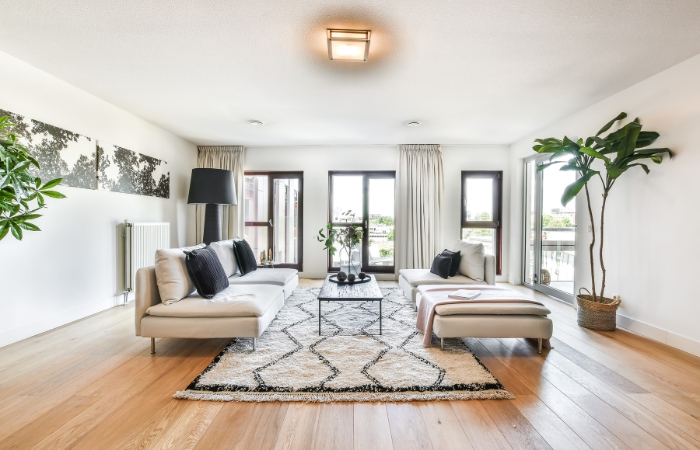
Cleaning and Caring for Different Textures
Each type of textured surface requires specific cleaning techniques to ensure it remains in pristine condition. When it comes to soft textures, such as fabric upholstery and cushions, regular vacuuming or gentle brushing can help remove dust and dirt. Be sure to check the manufacturer’s cleaning recommendations and use appropriate cleaning products for any spills or stains.
For hard textures like wood and stone, it’s crucial to use the right cleaning agents to avoid damaging the surface. Regular dusting and sweeping can prevent dirt buildup, while mild soap and water or specialized stone or wood cleaners can be used for deeper cleaning.
Protecting and Preserving Natural Textured Elements
Natural textured elements like wood and stone require extra attention to preserve their beauty and protect them from wear. Applying a protective sealant or finish can safeguard wooden surfaces from moisture and scratches, prolonging their lifespan and maintaining their luster.
Stone surfaces, such as countertops or floors, can benefit from periodic resealing to prevent stains and ensure their durability. Be cautious with acidic substances that can etch or damage natural stone surfaces, and clean up spills promptly.
Refurbishing Worn Textures to Extend Their Lifespan
Over time, some textured surfaces may show signs of wear, especially in high-traffic areas. Refurbishing and restoring these surfaces can breathe new life into your home’s interior.
For instance, if your hardwood floors have scratches and dull spots, sanding and refinishing can bring back their original shine. Worn or faded upholstery can be reupholstered or revitalized with fabric treatments to look as good as new.
Addressing Texture-Specific Challenges
Certain textures may have unique challenges when it comes to maintenance. Textured tiles and mosaics, for example, require thorough cleaning to prevent grout discoloration and buildup. Regularly scrubbing the grout lines and applying a sealer can keep these surfaces looking fresh.
Textured walls, like stucco or plaster, may develop cracks or chips over time. Repairing and repainting these surfaces can restore their texture and appearance, ensuring they remain an attractive feature in your home.
Conclusion
By understanding the various types of textures and how they can interact with each other, you’ve gained the ability to create a truly captivating and inviting atmosphere. Remember, the key is balance and harmony. Whether you choose to mix soft and hard textures for contrast or prefer a cohesive approach with a monochromatic color scheme, let your creativity guide you. Be bold with statement pieces, and don’t shy away from experimenting with textures in unexpected places.


